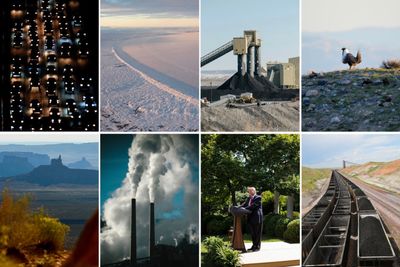The move to rescind environmental rules governing emissions of methane, a powerful greenhouse gas, brings to 84 the total number of environmental rules that the Trump administration has worked to repeal. Officials at the White House, the Environmental Protection Agency and other agencies have called the regulations burdensome to the fossil fuel industry and other businesses.
Half of those environmental rollback attempts, like the new methane reversal, will undercut efforts by previous administrations to reduce emissions and fight climate change. Many of these efforts have been challenged in the courts; whether the administration will succeed in achieving all of its goals is far from certain. Here are some of the most significant climate-related reversals:
Leaving the Paris climate agreement
One critical effort by the Trump administration was its announcement in 2017 that it would withdraw the United States from the Paris climate agreement. The process of withdrawing cannot be completed until 2020, but the move sent a strong signal to the world that Mr. Trump, who has scoffed at climate science, would be taking action at many levels of government to reverse climate policies created during the Obama administration.
Weakening methane regulation
Thursday's decision to remove restrictions on methane leaks from oil and gas wells is only one administration effort on behalf of fossil fuel producers. Burning natural gas produces half of the carbon dioxide that burning coal does, but methane, the chief component of natural gas, has a powerful effect on climate change. Though it does not persist in the atmosphere as long as carbon dioxide does, it has 80 times the heat-trapping power of carbon dioxide during 20 years in the atmosphere. The Obama administration had passed many rules to reduce methane leaks. An early effort by the E.P.A. under the former administrator Scott Pruitt to reverse Obama-era rules on leaks from new oil and gas wells was declared illegal by the courts in 2017.
Freezing fuel efficiency standards
Transportation is the United States' biggest source of greenhouse gas emissions, and fuel efficiency standards were a signature Obama administration proposal for reducing those emissions, as well as other air pollution created by vehicles. Earlier this month, the Trump administration proposed freezing antipollution and fuel-efficiency standards for cars. The proposal puts the administration on a collision course with California, which sets its own stringent tailpipe standards — and even with automakers, who wish to avoid the complexity of dealing with two car markets with different emissions standards.
Eliminating the Clean Power Plan
The Clean Power Plan, President Obama's effort to reduce greenhouse gas emissions by regulating carbon dioxide from existing fossil-fuel-powered electricity plants, was a big target for Mr. Trump, who campaigned in coal country on a promise to revive the ailing industry. He called for the E.P.A. to dismantle the Clean Power Plan in 2017. The planned substitute, unveiled in June as the Affordable Clean Energy Rule, is the administration's most sweeping plan to extend the lives of coal-burning plants and shore up the mining industry — an industry more threatened by economic change than regulation.
Promoting drilling on public lands
In December 2017, President Trump embarked on the biggest land protection rollback in United States history when he squeezed two national monuments in Utah by some two million acres. The move shrank Bears Ears National Monument by 85 percent, and reduced Grand Staircase-Escalante by about half. The two monuments had received protection in the Obama and Clinton administrations. Subsequent reporting on the Bears Ears decision showed that it was guided by hopes for oil drilling.
Similarly, the Trump administration is rushing to clear the way for oil exploration in the Arctic National Wildlife Refuge.
Helping offshore drillers, as well
The Trump administration has said it will allow offshore oil and gas drilling in nearly all coastal waters of the United States,including the California coast, the Arctic and the Eastern Seaboard, as part of its "energy dominance" agenda. The decision reversed an Obama administration ban. It also repealed offshore drilling safety regulations put in place after the Deepwater Horizon spill. The administration delayed the release of its formal proposal, however, after a federal judge decision declared the initial executive order about the plan unlawful.
Boosting fossil fuel companies by weakening protections for endangered species
The fossil fuel industry and other businesses have long bristled at the Endangered Species Act, which can restrict their ability to mine, drill and conduct other activity where threatened flora and fauna can be found. Earlier this month, the administration said it would change the act in ways that will make it harder to protect wildlife from climate change and other threats. The changes would make it easier to remove species from the endangered list, would allow a protection decision to be influenced by economic assessments, and make it more difficult to factor in effects of climate change that may be decades away. Even before that, however, the Interior Department opened nine million acres of Western land to oil and gas drilling by weakening habitat protections for the sage grouse, an imperiled bird beloved for its elaborate mating dance.
John Schwartz, New York Times, August 29, 2019
###
September 7, 2019
Voices4America Post Script. Maybe it is because of the devastation in the Bahamas, or the Carolinas? Maybe it is the "unhealthy" air quality which appears now on my phone app. I felt I had to post this summary.
Only we can end this madness! #StopTrump #StopTheGOP
Share this to engage others
